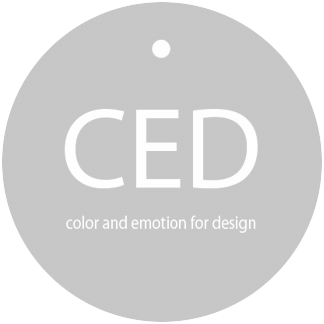 Dr.Suk co-authored an article entitled, “A Study of the Dynamics of Color Preference with and without Reference Objects with a Focus on Vehicle Products and Color Persistency [색채 적용 대상의 특성에 따른 기호 색채의 변화에 대한 연구: 운송 기기의 사례와 색채편식 현상을 중심으로]” in the Journal of Korea Society of Color Studies. The study comes from the term project of Jung-Hee Sun who attended Dr.Suk’s Research Methodology class. The study investigated the change of color preference and the characteristics thereof when a reference object is not assigned or when it varies. It introduces a tendency called “color persistency” that was dominantly observed in female group: Females who had preference for pink hue segement show overwhelming tendency toward pink hue regardless of product categories.
Dr.Suk co-authored an article entitled, “A Study of the Dynamics of Color Preference with and without Reference Objects with a Focus on Vehicle Products and Color Persistency [색채 적용 대상의 특성에 따른 기호 색채의 변화에 대한 연구: 운송 기기의 사례와 색채편식 현상을 중심으로]” in the Journal of Korea Society of Color Studies. The study comes from the term project of Jung-Hee Sun who attended Dr.Suk’s Research Methodology class. The study investigated the change of color preference and the characteristics thereof when a reference object is not assigned or when it varies. It introduces a tendency called “color persistency” that was dominantly observed in female group: Females who had preference for pink hue segement show overwhelming tendency toward pink hue regardless of product categories.
Abstract
The study investigates the change of color preference and the characteristics thereof when a reference object is not assigned or when it varies. An empirical study was carried out using the I.R.I Hue & Tone System made up of 121 colors. The subjects were provided with eight sets of color palette: color samples only and color samples applied onto seven vehicle products – a skate board, a kick-board, a bicycle, a scooter, a motorcycle, a mini car, and a semi-medium car. The subjects were asked to select a favorite color from each of the color palettes. The results of survey are summarized in three points: First, the colors of the PB (purple blue) hue segment and the V (vivid) tone segment were the most popular colors; however, concerning the preferred color for application to vehicle products, 88.0% of the subjects selected achromatic colors (grays). The result provides evidence that consumer’s favorite color varies depending on the reference object. Second, effects of the product attributes, such as the price of a product were tested whether they are influential to the color preference. The results showed that there is not any systematic explanation yet, and thus the hypothesis is rejected. Third, the term “Color Persistency”, is introduced to describe a person’s loyalty to a particular color. For the purposes of this study, when a subject selects a particular color hue or color tone for more than four vehicle products, he or she has a tendency of “Color Persistency”. Overall, “Color Persistency” was observed in 80.8% of the subjects. Moreover, 73.3% of the female subjects were loyal to their favorite color, as they selected their preferred color for more than four vehicle products, whereas this was true for only 33.3% of the male subjects. In addition, whenever the favorite color of a female subject belonged to the RP (red purple) hue segment, she persistently showed “Color Persistency”. In the discussion, the limitations of study are pointed out, and the possible uses of the findings are addressed in terms of product color development.
Full text in the Korean Journal of Science of Emotion and Sensibility Full text in the Journal of Korean Society of Color Studies